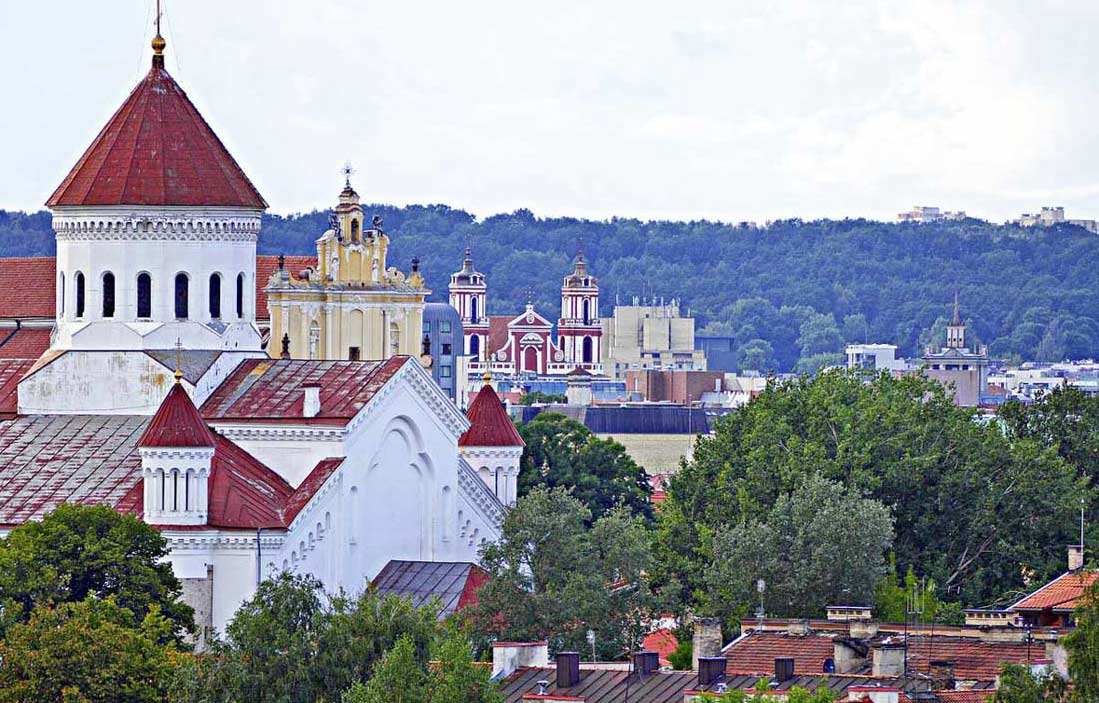
Anywhere we stood in medieval Old Town Vilnius, we could see the spires of at least three churches. For a nation that was once under the Soviet Union’s hammer and sickle, the number of ancient churches that survived is amazing.
That’s partially the result of being in a remote location, the southernmost nation in the trinity of Lithuania, Latvia, and Estonia that make up the Baltic States.
Old Town Vilnius
Even the entrance to Old Town Vilnius—the Gates of Dawn—has a chapel inside it, leading the way to the Churches of St. Theresa and the Holy Spirit before passing through the Basilian Gate to the Church of the Holy Trinity.
At the moment, my family and I stood in Cathedral Square, the ascetic white, neo-classical Vilnius Cathedral in front of us, it’s separate belfry (which we’d just ascended and descended), looming next to us like a stone rocket ready to take off.
Between us, the stebulklas: a tile in the stone square marking end point of the “human chain” and the end of Soviet occupation for the Baltic people.
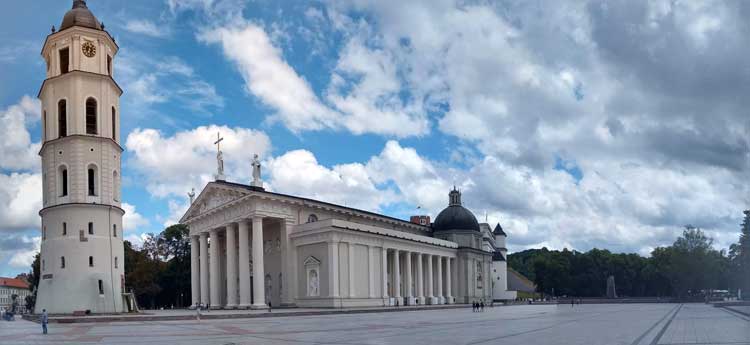
The Baltic Way
On August 23, 1989, two million Baltic people held hands in a human chain stretching from this point in Lithuania, through Riga, the capitol of Latvia, and into a corresponding point in Tallinn, capitol of Estonia. The longest human chain in history, known as the Baltic Way, was the moment that sparked the movement that resulted in independence for the three nations.
Surrounded by the marvels of Cathedral Square—Vilnius Cathedral, the Lower Castle and Upper Castle, the Lithuania History Museum—this modest marker in the square, despite appearance, was perhaps the most significant.
That said, the beautiful cathedrals of Vilnius provide ever-present candy for the eyes and food for the soul.
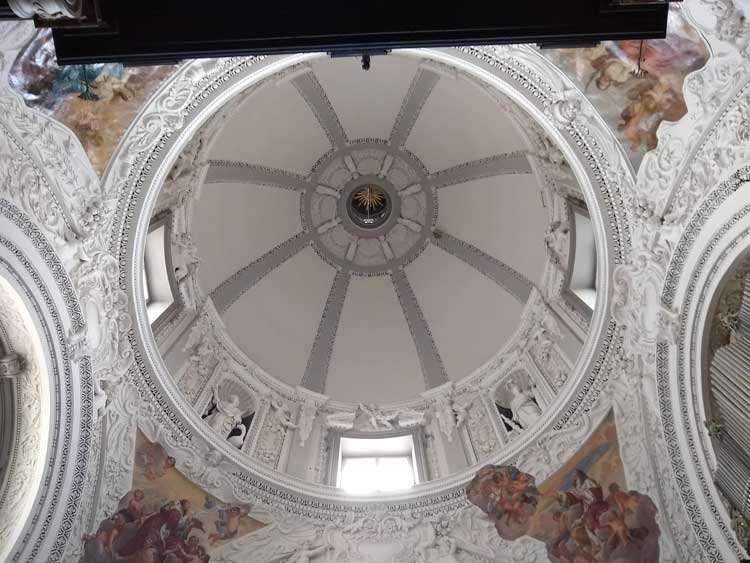
Vilnius Cathedral
Vilnius Cathedral’s glimmering white baroque interior and vividly colorful frescoes that seem to drip outside the designated lines dazzled us. Originally the site of a pagan temple in 1251, this 18th century cathedral was used by the Soviets as a garage for truck repairs, then as a picture gallery. It was re-consecrated even before the Soviet occupation ended.
Soviet influence aside, Russian influence remains firmly planted in Vilnius’s Orthodox Church of St. Nicholas, with its bright, Byzantine exterior and a serene candlelit interior that match the sanctity of the Russian Orthodox icons inside. Originally a Gothic church from 1514, it was a Greek Catholic church in the 1600s before becoming a Russian Orthodox church in the 1800s.
Tsar Alexander II himself provided funding for the Holy Mother of God Church, at the heart of which is the Mother of God icon gifted by the monarch.
The Baroque Church of Saints Peter and Paul comes alive with more than 2,000 stucco figures depicting biblical scenes and historical images. Decorations scale the nave all the way up to the copula, where flowers decorate the spiral to angles and the face of God.
Napoleon spared St. Anne’s Church and, according to local legend, wished he could take its beauty back home to Paris in the palm of his hand. Instead, he used it as barracks for his soldiers. In a predominantly Baroque city, the red brick structure and spires of St. Anne’s provide Gothic beauty inside and out.
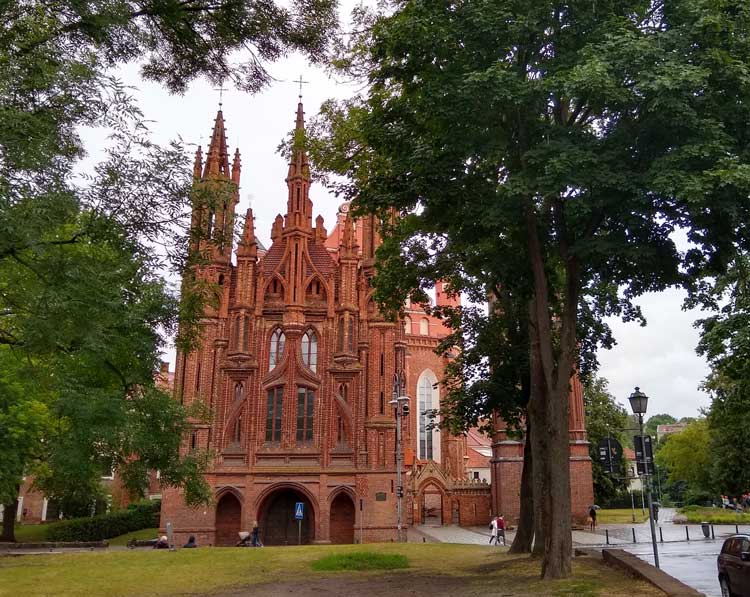
Dinner and a Concert
“I feel like we’ve been going to church all day,” Alex said as evening began to set in—an evening hard to detect since summertime daylight remained well into the night, the sun not setting until 9 p.m. or after.
“Let’s try some local food,” Nataliya recommended.
A few winding side streets between Palace Street and University Street, we found a traditional Lithuanian restaurant in a brick building on Stikliu Street that looked every bit as ancient as the architecture we’d been admiring all day. Their menu boasted traditional hunter’s fare.
“I’m game,” I said. Nataliya, Nicole, and Alex were too.
In a dimly lit brick and stone interior, we ordered from Lithuanian menus with broken-English translations. With Lithuanian beer for the grown-ups and local fruit juice for the youngsters, we began with a hunter’s game plate that included pork, beef, boar, deer, and beaver.
The zeppelins, or potato cutlets, were like gelatinous baked potatoes, the beaver stew was unique and zesty, and the grilled boar, juicy and delicious. Along with our bill came a complimentary serving of Krupnikas, a liquor sweetened with honey.
“That was good,” Nicole said, speaking as much about the setting as the meal.
“Now let’s go to the concert,” I reminded.
Where else, but in another church?
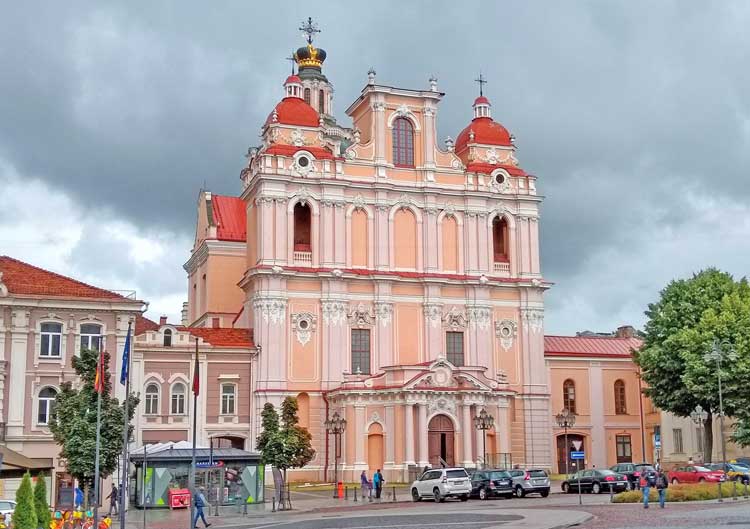
Church of St. Casimir
It was standing-room-only in the Church of St. Casimir, but we were blessed with up-front seats to one of the most beautiful organ and choral concerts we’d ever heard, the voices of the singers startlingly soothing.
As we listened to the performance and looked around at more Baroque beauty, I considered this church’s vivid history. Built by the Jesuits in the early 1600s, it was destroyed by fire and rebuilt multiple times.
Napoleon’s army used it for grain storage in 1812 before it became a Russian Orthodox Church. It was a Lutheran church for the Germans and then a Jesuit church in the early 1900s before the Soviets turned it into a museum of atheism. Finally, in 1991, it resumed its original role.
Wonderful as this evening’s performance was, when the chorus ended and made way for a solo organ number, we found ourselves fighting head nods.
We’d arrived in Vilnius just this morning by train from Riga, and it had been a long day of exploring. The concert over, we walked about fifteen minutes from Town Hall Square, just across the street from St. Casimir, to our rented flat nearby.
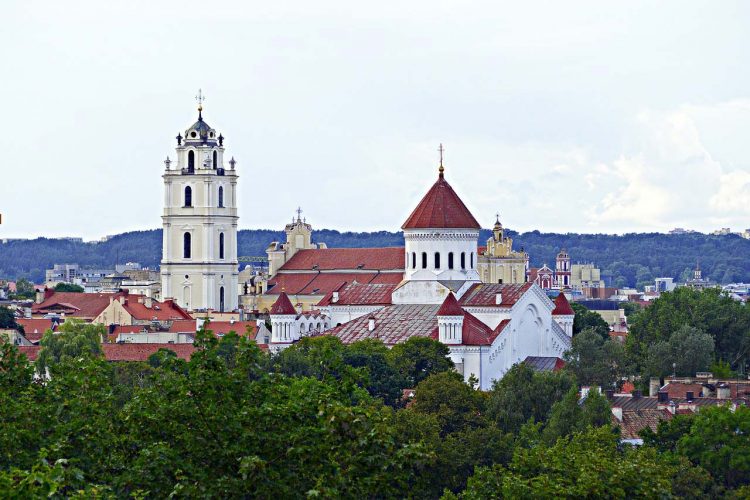
Morning in Vilnius
The next morning, after a breakfast of pastries, coffee, and juice in our flat, we stepped out onto our back balcony to overlook Old Town Vilnius. St. Casimir dominated the Town Square side of town, and the Upper Castle and Hill of Three Crosses monument dominated the Cathedral Square side.
But between them, on this morning, the blue sky filled with hot air balloons. Like a scene from Albuquerque, the colorful balloons ascended, as though to remind us that wonderful as Vilnius was, the city wasn’t a sandbag to hold us down. It was a fine day for a road trip.
Hill of Crosses
We picked up our rental car and drove 2 ½ hours to the Hill of Crosses, near the city of Siauliai, in northern Lithuania. Uncanny and awe-inspiring, this small saddle-shaped hill in a large, open field brims with more than a hundred thousand crosses.
They ranged from larger-than-life monuments to pendent-sized ornaments. A pilgrimage site, many pilgrims, tourists, and visitors alike plant their own crosses here.

When Poles and Lithuanians of this region became subjects of the Russian Empire in the 1830s, dissidents planted crosses here to commemorate the fallen rebels whose bodies could not be located.
Later, the Soviets routinely bulldozed the hill of crosses, only to have the crosses reappear within days—sometimes overnight. Local stories tell of curses upon Soviet workers ordered to destroy the monument, not unlike “curse of the mummy” legends circulating when westerners began raiding the pyramids.
Today, the Hill of Crosses continues to stand as a testament to the faith and will of a people up against an oppressive force. Like many other visitors, we bore our own small crosses as we approached the hill.
We’d suffered three recent deaths in our own family—two grandparents and a parent—so we dedicated our own memorial crosses to them.
In many destinations, we leave with souvenirs. At the Hill of Crosses, we lightened our load. In both cases, the memory of the experience is the best take-away, better than any memento money can buy.
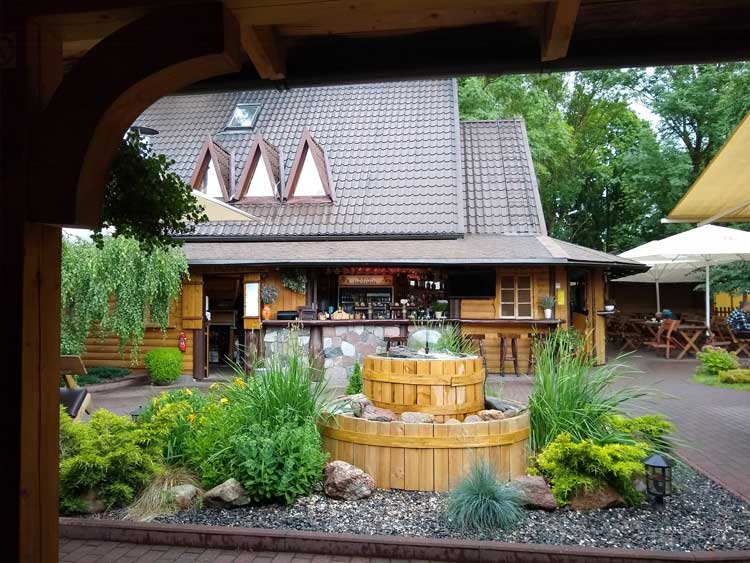
Sunny Afternoon in Siauliai
We have a family friend from Siauliai, the fourth-largest city in Lithuania. Just next to the Hill of Crosses, we decided to pay a visit. The Renaissance-style Cathedral of Sts Peter and Paul features a tall tower that dominates the area near Lake Talsos, and the church’s southern side features Lithuania’s oldest sundial.
Across from the cathedral is Sundial Square, laid out like an amphitheater with an enormous sundial, unveiled in 1986 to commemorate the 750th anniversary of the Battle of the Sun.
Increasingly brutal attacks by Germanic crusaders prompted Lithuania tribes like the Samogitians and Auksaitiai to join forces and fight back. In 1236, the Samogitians drove out the Knights of the Sword, and the Battle of the Sun put Siauliai on the map.
On our own map for this visit was the nearby Bicycle Museum, with about 100 cycles on display, a drive by Town Hall, and a local meal at Juone Pastuoge, a Lithuania country restaurant with alpine-style outdoor seating, wooden sculptures and fold art, and a hearty hot meal of zeppelins, fried potatoes, meat, and soup with homemade rye bread.
Having enjoyed a taste of Siauliai, we returned to our apartment in Vilnius for an evening back in the Lithuanian capital where every turn of the head presented us with spires and crosses.
How to Get to Vilnius
Many major airlines fly in and out of Vilnius, Lithuania and nearby Riga, Latvia and most online ticket sellers and travel agents will generate affordable flights. In fact, given time and funds, it’s worth visiting the three Baltic nations and capitals (Vilnius, Lithuania; Riga, Latvia; and Tallinn, Estonia) during one visit. Each is easily accessible by train, bus, or rented vehicle.
What to Eat in Vilnius
Aline Leicia, 4 Sitkliu St., features craft beer and local comfort food; the potato cakes are shredded and fried fresh with each order.
Lokys, 8/10 Stikliu St., boasts great local game in a medieval setting.
Don’t miss nearby Trakai Island Castle in the outskirts of Vilnius
Where to Stay in Vilnius
There is an array of clean, safe, affordable apartments for rent by the day or week on such websites as Airbnb.com or Booking.com. Be sure to check the ratings and feel free to contact the hosts with any questions before booking.
Eric D. Goodman is author of the forthcoming novel, Setting the Family Free and is at work on the novel Wrecks and Ruins, set in Baltimore and Lithuania.
- 6 Reasons to Visit Portland, Maine (+ Travel Tips) - April 18, 2024
- Cruising with Discovery Princess on the Mexican Riviera - March 30, 2024
- La Paz, Mexico: Pearl on the Sea of Cortez - February 26, 2024
